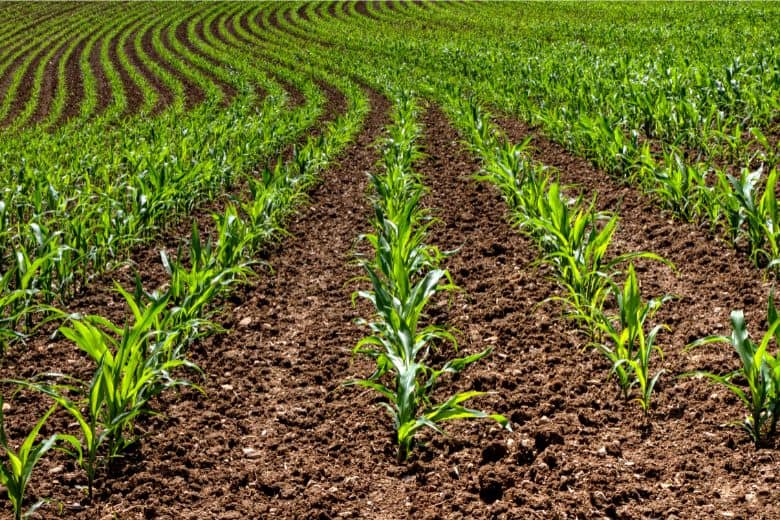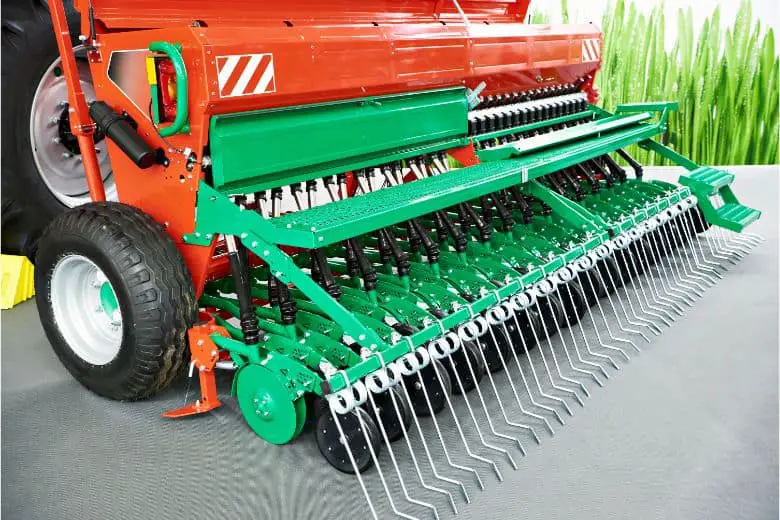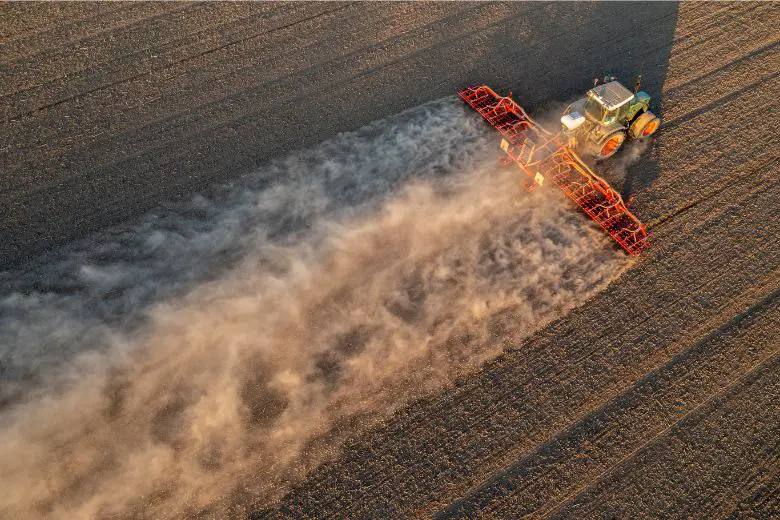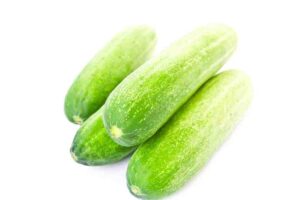
While “Can You Plant Corn With A Grain Drill” may seem an unconventional way to plant corn, it is possible with some modifications to the grain drill.
Apparently, corn is one of the most widely grown crops in the United States and around the world. It’s used to make everything from tortillas and popcorn to cereal, corn syrup, and animal feed. With the rise in small-scale farming and diversified crop production, many growers are wondering if it’s possible to plant corn using a grain drill rather than a traditional planter.
With that said, we will explore whether or not corn can successfully be planted using a grain drill and what growers need to know to make it work.
Keep Reading!
What is a Grain Drill?

A grain drill is a type of planting machine used for seeding small grain crops like wheat, oats, barley, and rye. It works by opening a furrow in the soil with colters or disc openers, dropping seed into the furrow at precise intervals, then covering the seed back up with closing wheels or press wheels. Grain drills distribute seed more uniformly than broadcasting and require less seed per acre. They are economical, effective tools for planting small grains but aren’t typically used for larger seeded crops like corn.
Can a Grain Drill Plant Corn?
In theory, yes – a grain drill can physically plant corn seed. The seed hopper and distribution mechanism can handle corn seed size and weight. However, there are some important factors to consider:
1. Seed Spacing:
Standard grain drills are set up to plant small grains in fairly narrow spaced rows, typically 6-8 inches apart. Corn requires wider spacing of at least 18-36 inches between rows to allow for proper plant development and airflow. Adjusting row spacing on a grain drill may be difficult or impossible.
2. Seed Depth:
Drills are tuned to plant small grains around 1/4-1/2 inches deep. Corn needs to be planted 1-2 inches deep for best germination and emergence. It can be tricky to adjust drilling depth precisely for corn.
3. Calibration:
Grain drills meter seed flow based on small grain size and weight. Corn seed is larger and heavier, so proper calibration would need to be done to ensure even seed distribution at the right seeding rate.
4. Closing System:
Furrow closing wheels and press wheels on drills are optimized for small grains. Corn seedlings may have difficulty emerging through very closed furrows.
5. Planting Population:
Corn population recommendations are usually much lower than for small grains – around 30,000-35,000 plants per acre versus 90,000-120,000 for wheat. This lower population could be difficult to achieve accurately using a grain drill setup.
For these reasons, grain drills are really better suited to small grains rather than corn. However, with some adjustments and calibration, it is possible for growers to plant corn successfully using a grain drill in many situations.
Steps for Planting Corn With a Grain Drill

Planting corn with a grain drill can be a straightforward and efficient way to get your crop off to a strong start. Here are the steps to get the job done:
1. Select the right type of corn seed for your area and soil conditions.
2. Prepare the soil for planting by tilling and fertilizing it.
3. Set the drill to the correct depth and spread the seed.
4. Cover the seed with soil and make sure it’s properly sealed.
5. Adjust the drill as needed to get the right amount of seed in each row.
6. Water the newly planted area to ensure the seed has enough moisture to germinate.
7. Monitor germination and make sure to weed out any unwanted plants.
Using a grain drill to plant your corn is a great way to get the most out of your garden! With the right preparation and care, you can have a successful and abundant harvest.
Tips for Planting Corn with a Grain Drill
If a grower wants to give planting corn with their grain drill a try, here are some tips for improving success:
# Space Drill Rows Wider: Adjust colters, press wheels, etc., to space rows at least 18 inches apart to match recommended corn spacings.
# Shallow Planting Depth: Adjust seed depth to less than 2 inches to avoid crowding seeds and ensure emergence.
# Calibrate Well: Run an empty drill through the test area and weigh collected seeds to calculate the proper seeding rate for corn population goals.
# Consider Seeding Rate: Adjust the drill’s typical small grain rate way down to account for lower corn population needs versus grains.
# Dry, Friable Soil Conditions: Having properly prepared, loose soil will help emergence through closed furrows.
# Monitor Emergence Closely: Be prepared to replant thin or missed areas for an even stand.
# Consider Interseeding: Planting corn between established soy or other crop rows using a drill could work better than solid planting.
# Use Larger Seeded Corn Varieties: Dent and flint corn may emerge through drill better than popcorn or sweets.
Case Studies of Drill-Planted Corn
Through experimentation, some growers have found success using grain drills for corn. Some reported case studies:
- Nebraska farmers plant corn in 38″ rows with a John Deere 750 drill, seeding at 25,000 seeds/acre. He adjusts seed depth and furrow closure and aims for a population of 22,000 plants.
- Wisconsin grower spaces drill rows at 30″ and uses triticale seed as a nurse crop to protect emerging corn seedlings. He thins out the triticale later for clean corn.
- Grain specialists at Ohio State University planted corn using a Great Plains drill, spacing rows at 36″. They thinned later but still harvested over 150 bushels/acre, comparable to planter plantings.
- Canadian growers have experimented with no-tilling corn into soybean stubble using drills. Emergence has been variable depending on soil conditions and planter settings. Populations averaging 24,000 plants have yielded 130 bushels/acre.
While not a perfect solution in all situations, these case studies demonstrate that with adjustments and careful management, grain drills have the potential to establish corn stands successfully. Yields may be similar to planter plantings if emergence and populations are adequate.
Is Planting Corn with a Drill Worth It?
For some growers, planting corn using their existing grain drill makes sense as a way to diversify rotations and minimize equipment needs. However, there are limitations to consider:
- Emergence may be more variable and thin spots more common versus a planter. Careful modification and management is needed.
- Achieving target populations precisely to maximize yields can be challenging with a drill’s mechanics versus a planter’s singulation.
- Row widths and plant spacing flexibility is more limited than with planters that can handle different arrangements.
- Drills are set up for grain planting speeds and capacities, not the higher outputs needed for corn acreage.
For small acreages or diversified small grains/corn systems, a drill may be a good low-cost option. But for larger continuous corn acres, a planter will generally deliver more consistent stands economically. Growers need to weigh the tradeoffs for their individual operations and goals. With the right adjustments and management, grain drills show promise for planting corn in some situations, complementing traditional planters.
The Downside of Using Grain Drill For Planting Corn
Here are some additional disadvantages to consider when deciding whether to plant corn with a grain drill:
- Emergence issues and thin stands. Without the precision seed placement of a planter, it can be difficult for a grain drill to establish a uniform and dense population of corn. Miss-planted or buried seeds may not emerge, leading to gaps.
- Weed pressure. Gaps or thin areas in the corn stand will be more susceptible to weed invasion. The closed furrows of a drill can also inhibit early weed control until the corn emerges.
- Equipment wears. Corn is a much harder and larger seed than small grains. Planting corn with a drill designed for oats or wheat could lead to more rapid wear and potential repair costs over time.
- Attachment needs. Most drills don’t have hoppers or metering systems optimized for corn. Adapters may be needed to retrofit the drill, adding complexity and cost.
- Yield drags. Even with good emergence and stands, the less precise spacing of a drill versus a planter could translate to slightly lower yields per acre over time.
- Flexibility. Once set up for corn, the drill loses its ability to plant small grains, meaning it sits idle more of the season. Planters can switch between crops.
- Labor. Drill-planted corn may require more scouting, thinning, and hand-weeding work to get an adequate stand versus a planter.
- Investment. For large-scale corn growers, a drill is an added capital purchase that sits idle most of the year. A planter provides a better return on investment.
- Experience. Operating a drill for corn requires more troubleshooting, calibration, and management expertise versus using it for grains it was designed for.
So, in summary, while drills can plant corn, emergence issues, potential yield drags, added costs and labor, and lack of flexibility are disadvantages to consider versus using a planter designed specifically for corn production.
Conclusion
Lastly, grain drills are designed primarily for small grain seeding, with calibration and modifications they can successfully plant corn. Achieving target populations, emergence, and consistent yields may take more effort than a planter. For diversified growers on small acreages, a drill may prove a worthwhile investment. Larger corn producers are generally better served using a planter, but drills provide an alternative option worth exploring for some corn production systems. Careful consideration of individual farm resources and goals will determine if planting corn with a grain drill makes sense in each operation.






One Comment